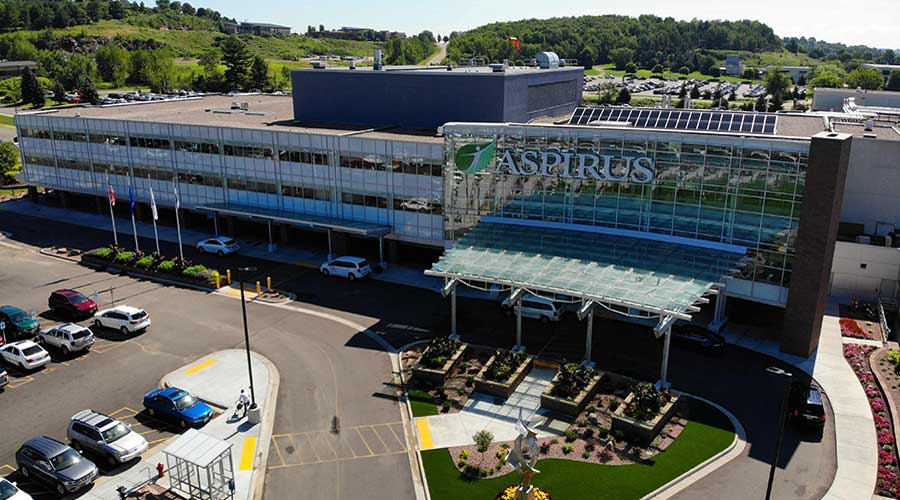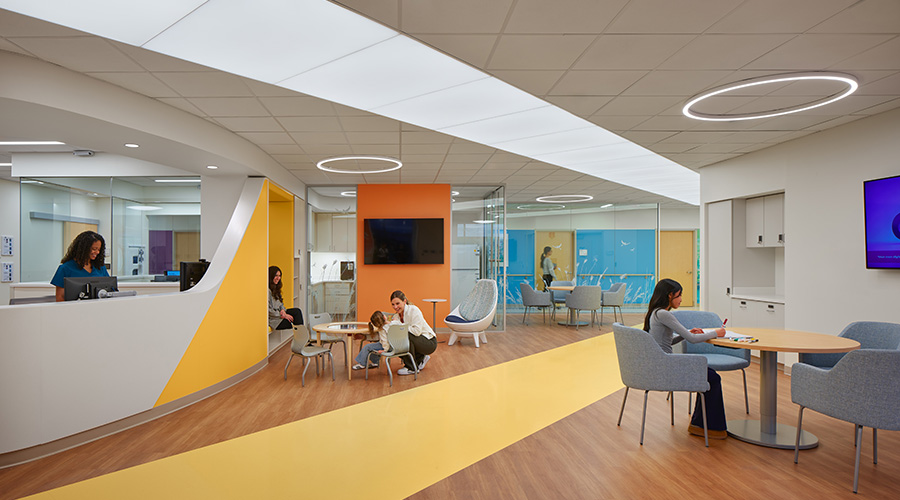The plot of land in question might not be large, but the message it sends is loud and clear.
“It dovetails with the strategy as a whole that we're trying to model sustainability,” says Ali Wolf, system director of sustainability for Aspirus Health. “Beyond just saying it, we need it to be lived.”
Wolf is referring to a tree-planting project at Aspirus Wausau Hospital (AWH) in Wisconsin that has been recognized by the Arbor Day Foundation, which earlier this year named the hospital as a Tree Campus Healthcare institution for showing its understanding of the vital role trees play in human health.
"To receive Tree Campus Healthcare recognition, AWH met five program standards: have an advisory committee, facility tree care plan, community forestry project, a celebration event and a financial investment toward a tree care plan or projects.” according to an announcement from the organization.
Its Tree Campus Healthcare program aims to transform community health and wellness and ultimately save lives through the health benefits provided by trees and to recognize healthcare institutions that make an impact on wellness through tree planting, education and community engagement.
Making sustainability visible
The decision to pursue the Tree Campus Healthcare recognition arose from the healthcare system’s sustainability goals.
“One of our system sustainability program strategies was to create sustainable landscapes, which was an excellent dovetail with the Arbor Day Health Tree Campus,” Wolf says, adding it was important that the project is visible to the hospital’s occupants, patients and visitors.
“It's a very visible way for patients and staff to see what sustainably looks like, unlike when you think about doing a conservation project and the fan slows down above the ceiling,” she says. “You and I can't see that, so it is equally as important, if not more important, to do the visual things.”
The project involved planting 10 maple trees in a small section of turf along one of the new boulevards on the hospital campus.
“That was redone and needed some trees,” Wolf says. “I would guess it's maybe 75 feet long and probably about 5 feet wide. It's not significant from a space standpoint, but visually, it changes that approach to the hospital.
“It's the road that takes you to the ED, so certainly, patients are seeing that. The way that our campus is structured, we have a ring road that goes around the hospital campus."
The project has indeed attracted attention as intended.
“It's very much something that patients comment on pretty consistently,” she says. “What we've recognized is that we spend a lot of time and dollars on spaces that are not as patient-facing. So, we tried to look at managing these spaces differently.”
Sustainable transitions
Beyond the tree project, the hospital has taken additional steps to enhance the sustainability of its landscapes. For example, the hospital has transitioned some landscapes from using annuals to using perennials. The shift to greater use of perennials allows the hospital to more effectively use limited time and dollars to achieve its sustainability goals.
“That helps us from an initial investment standpoint because we put (the perennials) in once and they do their thing for life,” she says. “Also, they're much more drought-tolerant plants. The water requirements of a perennial versus an annual is significantly less.
“It also helped us think about the patient-facing spaces and what can we do with different colors throughout the year. Does that provide us an opportunity to still do some annuals but more strategically?”
The hospital’s landscapes also have moved away from using wood mulch in favor of rock mulch
"Rock mulch is something that you basically fix and forget,” she says. “Wood mulch is something that we need to attend to at least every other year. Sometimes, we may not get through a whole season, or maybe some spaces can be stretched to every three years, depending on the dye color. But it just sort of looks tired.”
The question driving both decisions was, “Could we spend our time and our dollars somewhere else and achieve the same outcome?” Wolf says.
The Tree Campus Healthcare recognition has allowed Wolf and her team to bring greater exposure to the hospital’s sustainability efforts, a benefit she says other hospitals can take advantage of.
“The Arbor Day Foundation is definitely a partner for us in this,” she says. “They have framework for healthcare campuses. It might be an opportunity to showcase their program if other healthcare organizations are unaware of that.”
Beyond landscapes
To minimize its impact on the environment, Aspirus Wausau also has taken other steps, Wolf says, such as energy conservation projects involving LED lighting, chiller and boiler plant optimization and building automation system scheduling.
“We have improved access and education to an enhanced recycling program, as well as considered where we can get away from one time use plastic products,” she says. Aspirus has shifted many of our new construction efforts to more sustainable finishes and embraced predesign energy modeling in selecting our building HVAC and envelope selections. We are shifting our fleet to embrace vehicle electrification, having purchased four hybrid plug-ins and two all-electric vehicles to date.
“Our food service team has been growing greens in their indoor vertical hydronic farm, support our salad bar and patient food and veggie prescriptions. Lastly, a cross-functional group has assembled a green team to facilitate ongoing sustainable process changes, improving waste, energy and carbon impacts of the site.”
Dan Hounsell is senior editor for the facilities market. He has more than 25 years of experience covering engineering, maintenance, and grounds management issues in institutional and commercial facilities.

 Contaminants Under Foot: A Closer Look at Patient Room Floors
Contaminants Under Foot: A Closer Look at Patient Room Floors Power Outages Largely Driven by Extreme Weather Events
Power Outages Largely Driven by Extreme Weather Events Nemours Children's Health Opens New Moseley Foundation Institute Hospital
Nemours Children's Health Opens New Moseley Foundation Institute Hospital Code Compliance Isn't Enough for Healthcare Resilience
Code Compliance Isn't Enough for Healthcare Resilience Ribbon Cutting Marks First Phase Completion for New Montefiore Einstein Facility
Ribbon Cutting Marks First Phase Completion for New Montefiore Einstein Facility